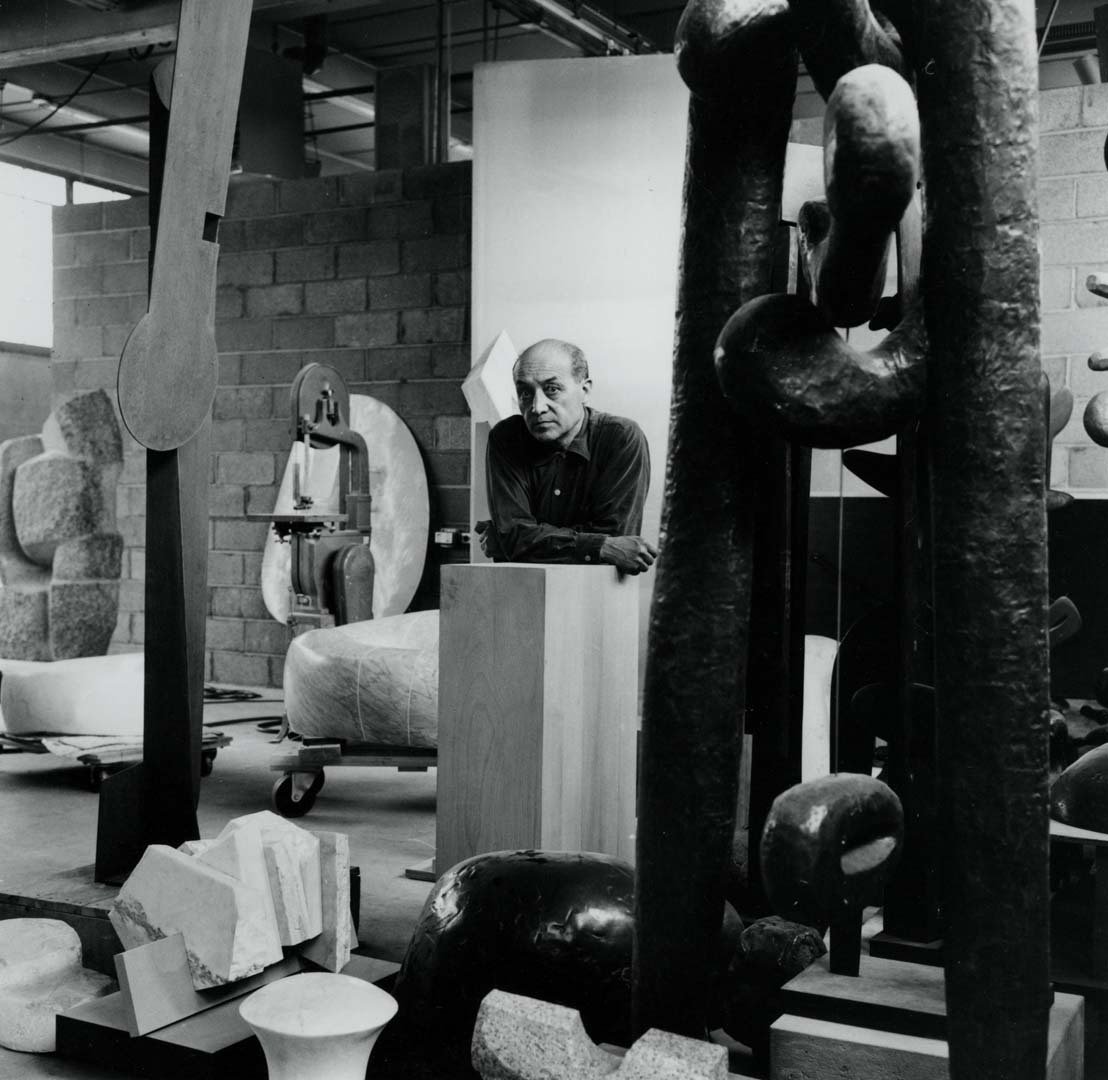Isamu Noguchi (1904-1988)
Two sculptures by the late Japanese American artist, Isamu Noguchi (1904-1988) will feature in our landscape. An artist who innovatively addressed our relationship with matter in space, Noguchi’s career spanned sculpture, architecture, dance and design and is closely associated with landscape and public space. Conceived as tools for exploring nature and human relationships, his sculptures at the Foundation, Octetra (three element stack) 1968 (2021) and Fat Dancer (1982-83), demonstrate the artist’s fascination with geometry and the interplay between positive and negative space.
Artist
Opening Season 2025

About the artist
Isamu Noguchi (1904–1988) was a groundbreaking Japanese American artist who redefined the limits of sculpture and its social impact while modeling a life and practice premised on hybridity, openness, and experimentation. Over his six-decade career, Noguchi created sculptural works with materials spanning stainless steel, marble, cast iron, balsa wood, bronze, aluminum, basalt, granite, and water. He also designed gardens, playgrounds, plazas, furniture, lighting, and stage sets—all of which fell within his broad definition of “sculpture.”

Noguchi was the son of Léonie Gilmour, a white American writer and editor of mostly Irish descent, and Yonejiro Noguchi, a Japanese poet. Although he was born in Los Angeles, he spent much of his early childhood in Japan. He returned to the United States at age thirteen to attend school in Indiana before eventually moving to New York City. An internationalist, Noguchi traveled extensively throughout his life, and in his later years, he maintained studios in both Japan and New York. He discovered the impact of large-scale public works in Mexico, earthy ceramics and tranquil gardens in Japan, subtle ink-brush techniques in China, and the purity of marble in Italy—each of these experiences informing his multi-faceted and prolific practice.
In 1985, Noguchi opened The Isamu Noguchi Garden Museum (now The Isamu Noguchi Foundation and Garden Museum) in Long Island City to create his own place in the world—one where he could share his art and philosophy and foster connections between communities both local and international. Noguchi also hoped to establish a foundation in Japan; a wish that was fulfilled with the opening of the Isamu Noguchi Garden Museum Japan at his former studio in Mure in 1999.
Noguchi did not belong to any particular movement but collaborated actively with artists, makers, and thinkers across disciplines. At once traditional and modern, organic and industrial, playful and profound, Noguchi’s work set a new standard for the reintegration of the arts.
Artist
Opening Season 2025

Artists
Susan Philipsz (b.1965)

Artists
Rose Wylie (b.1934)

Artists
Hélio Oiticica (1937-1980)
